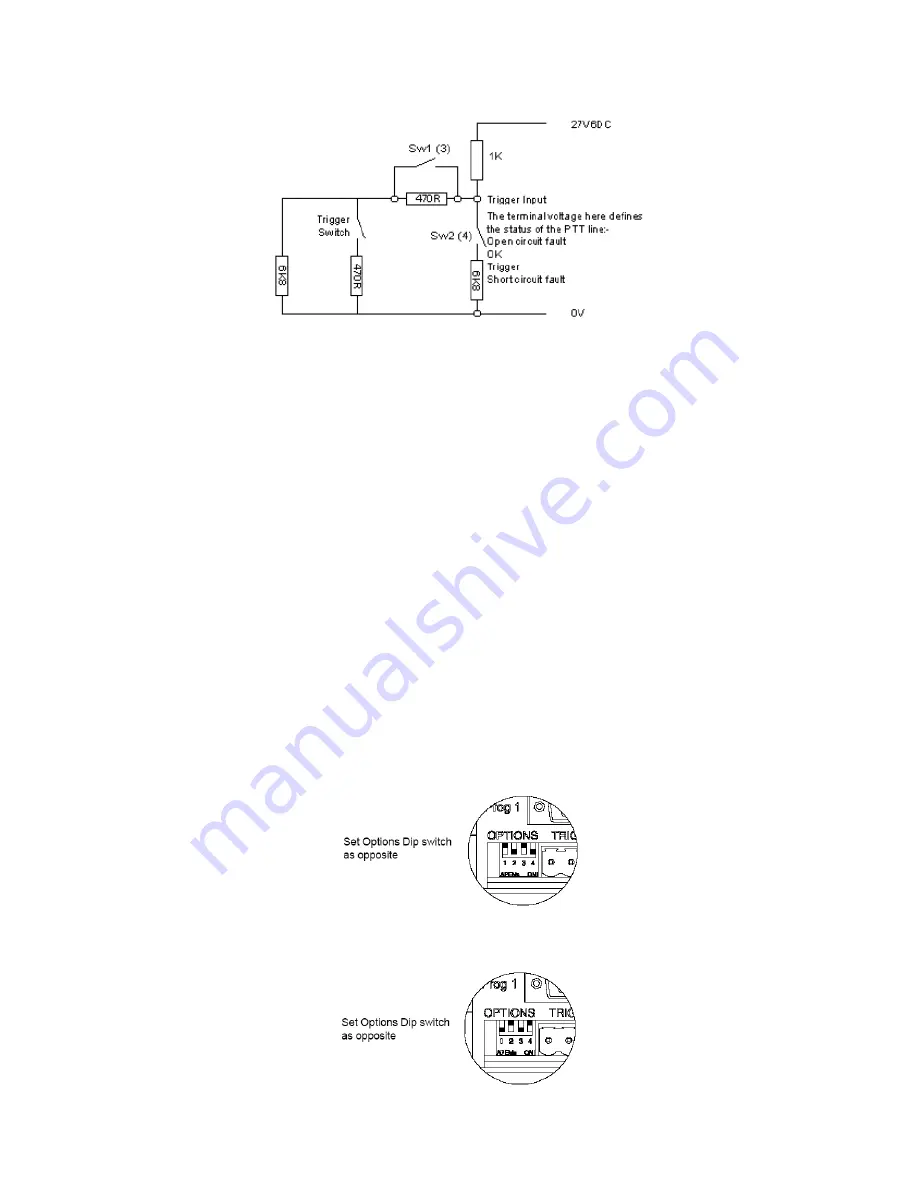
Page 5 of 6
DocNo.DCP0001328 RnB 10/10/03 rev6
Trigger input fault monitoring
The Contact input (Trigger) is monitored by a resistive potential
divider as shown below;
The current drawn by the 6K8 resistor (in the ‘monitored’ unit) indicates to the ‘monitoring’ unit that the
Trigger (PTT) line is intact. Open and short circuit faults are separately detected and operation of the Trigger
is detected by the change in voltage level at the Trigger input when the 470 ohms is switched in. This
resistor can be in the range 300 to 800 ohms to allow flexibility in the resistance of cables and the exact type
of trigger device used in other applications.
The audio output is monitored by a 14V dc bias (relative to ground) being applied to both sides of the
balanced line. The device receiving the SVMP2-8’s audio output must provide this ‘phantom’ voltage. If the
phantom voltage is not present then the appropriate channel will report an audio fault. The PTT output for
each channel will normally present a 6.8k
Ω
resistance to any connected device. When the channel is
playing a message this resistance is reduced to 470
Ω
.
Fault outputs
Faults are signaled from the SVMP2-8 to the next unit in the chain via the PTT output using
the same principle as the Trigger input fault monitoring described above.
If the micro-controller or the watchdog detects a fault, this is signaled via an AND gate to either or both of the
transistors as relevant in series with the PTTs and the 6K8 resistors. If there is a fault, the relevant
transistor(s) switch off and open circuit the 6K8, cutting the monitoring current and communicating the fault.
The PTTs are connected to monitoring circuits in the next device in the chain (SS2n or iX LS), which operate
exactly as described above.
PTT output
If either or both messages are playing, the micro-controller turns on the relevant transistor in
series with the PTTs and the 470 ohm resistors. This alters the voltage on the PTT line and operates a
trigger detection circuit in the next device in the chain exactly as described above and opens the audio path.
Trigger inputs
Monitored mode
The trigger inputs require a 470
Ω
resistance to be applied to trigger the message. A
6k8
Ω
resistance must be present to prevent a switch fault. If the trigger input for a channel is open or short
circuit a switch fault will be shown for the associated module.
Non-monitored mode
The trigger inputs require a short to ground to be applied to trigger the message.
Switch faults are not reported.
























